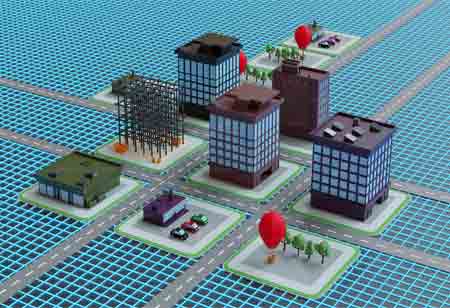Thank you for Subscribing to Gov Business Review Weekly Brief
Adoptance Challenges Of AI for Disaster Management.
According to satellite pictures and weather forecasts, artificial intelligence systems may immediately assess floods, buildings, and road damage.

By
Gov Business Review | Tuesday, December 10, 2024
Stay ahead of the industry with exclusive feature stories on the top companies, expert insights and the latest news delivered straight to your inbox. Subscribe today.
According to satellite pictures and weather forecasts, artificial intelligence systems may immediately assess floods, buildings, and road damage. This allows rescuers to effectively disseminate emergency relief, recognize those still in danger, and isolate them from an escape route.
FREMONT, CA: Yearly, Floods, fires, hurricanes, and other natural catastrophes jeopardize more than 160 million people. And things are just going to worsen. Natural disasters are just four times more common than they were in 1970. Based on projections, the frequency and ferocity of such storms may rise because of climate change. Artificial Intelligence (AI) can reduce damage more efficiently and effectively assign relief resources. It can accelerate aid distribution and taper the decisions of front-line comfort personnel.
Disaster preparedness proceedings could look much different tomorrow than they do today. When a cyclone or hurricane is forthcoming, geospatial, weather and historical disaster data can be employed to estimate how many people will be displaced and where they will likely relocate. Such details could aid disaster responders in deciding how much aid (water, food, and medical care) is necessary and where it should be supplied. About satellite pictures and weather forecasts, AI systems may immediately assess floods, buildings, and road damage. This allows rescuers to effectively distribute emergency relief, recognize those still in danger, and cut off from an escape route.
Following disasters, companies are employing AI algorithms to assess social media feeds. By labeling photographs from shelters where people are without blankets or waiting outside in the streets, this analysis could reveal crucial on-the-scene information regarding infrastructure damage and relief being delivered to victims.
Nonetheless, despite the efforts of numerous public sector organizations and commercial sector data players to improve disaster assistance, the impact of these efforts is still limited by several obstacles. The first is that the scope is constrained. Many private-sector projects involve one or a few governments or non-governmental organization partners and focus on specialized use cases, typically isolated from the larger disaster-relief community and without integration into established disaster-relief protocols. This fragments efforts and may follow in AI-derived insights and algorithmic tools provided to firms that cannot maintain or effectively include them in their decision-making operations.
Second, while a wealth of open data may help disaster assistance–satellite, geospatial, telecom, social media, and financial–it is not often available when required. Moreover, datasets are rarely merged in ways that could generate further details with other large datasets and data from seasoned field procedures. This ground view, which is usually overlooked and studied systematically, can be even more useful than big data insights.
Yet, in catastrophic cases where human lives are on the line, AI must be mindful of its limits. Data analysis does not often produce the outcomes that proponents claim, making it hard to evaluate such claims without a standardized method for analyzing algorithm methodologies and premises. Commercial buildings, for instance, have been exposed to AI models created to assess the residential injury, although these structures use different materials, construction methods, and standards. There are no standards that developers and customers have consented to track in a future where AI ethics are growingly scrutinized.
More in News






